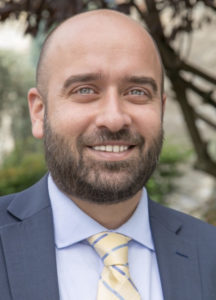
via Getty Images
Mar. 7, 2024 By Chris Herman
Commonly referred to as “looping”, the practice of having students remain with a teacher for more than one year isn’t new – just look back to the one room schoolhouse or the early 20th century Waldorf classroom. It seems hard to argue against looping if a child is assigned to an exceptional teacher who understands their strengths and needs. It also seems hard to argue for spending a second year in a classroom with a dysfunctional dynamic.
In September, students acclimate to a teacher and teachers learn the profiles of new students. This takes time and that comes at the expense of tailored instruction. Fans of looping ask us to imagine a September where everyone is already teaching and learning based upon meaningful understandings of a teacher’s expectations and a student’s strengths and needs.
Educators and students alike report positively on looping and they have ample research to back that perspective up. Citing time saved, intentional teaching earlier in the year, and deeper teacher student relationships, looped students advance faster especially in early childhood. Preschools in Italy and Germany have shown the benefits for decades.
Here in the US, there is no shortage of research either. Children in multi-year classrooms perform better in math, reading, basic skill development, and executive functions like self-regulation. The benefits extend to attendance, parent engagement, grade promotion, information retention, student to student relationships, and student perceptions of school.
Studies show benefits of looping through Middle School where Math scores increase even when controlling for SES, ethnicity, and gender. Benefits are seen in urban and suburban schools, schools in the north and south, for ELL and English-speaking students, and for those both with and without disabilities. So why isn’t every student in a looped classroom?
Relationships are key to a successful model and if we see positive impacts from strong relationships it goes without saying dysfunctional relationships have the opposite impact. If a teacher student relationship is broken, learning suffers, a student is less likely to work effortfully for the adult, and the child might become disruptive.
Classrooms with difficult dynamics are more likely to have punitive practices, yelling, and an atmosphere less conducive to learning or teacher satisfaction. If the relationship is negative, a child could be stuck in a loop of lowered expectations and, for the child disliked by peers or bullied, looping means years of mistreatment.
Finally, teacher specialization has a profound impact on student achievement and when looping, teachers must become experts in more subjects across multiple years. Teachers rely on a wide fund of knowledge, strategies, and routines to teach. In the multi-year model, they need a larger toolbox and wider repertoire.
Schools can easily put measures in place to nurture strong relationships, inclusive and respectful practices, and professional development that enables a highly effective looping model. To that end, I’d argue that nesting students with a teacher or team with whom they grow and learn over time is a worthwhile model for all schools to explore.
* Christopher Herman is Head of School at Garden School, a Nursery to Grade 12 Independent school in Jackson Heights, NY. He is a graduate of the University of Pennsylvania’s School Leadership Program and former adjunct faculty at St. Joseph’s University in Philadelphia. He writes and speaks often on topics relevant to education.

Chris Herman





